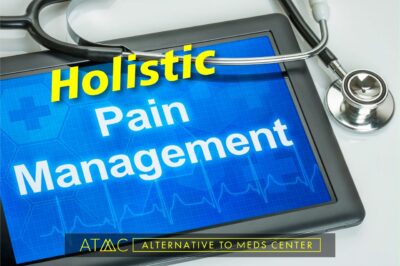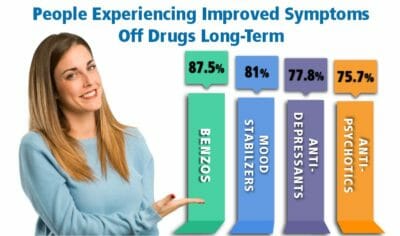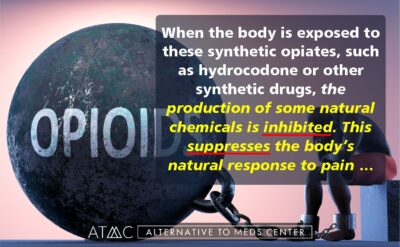Most Common Pain Medication Withdrawal Symptoms
Symptoms can range from dizziness and mild irritation to more dangerous symptoms that can lead to a medical emergency.
The symptoms of withdrawal can also make relapse much more likely, re-starting the cycle of pain medication addiction. That’s why understanding, anticipating, moderating, and preventing severe withdrawal symptoms are so important for reaching recovery. To do so, it is crucial to seek the assistance of medical professionals, skilled therapists, and other rehabilitation professionals who can employ the proper tapering techniques to avoid excruciating discomfort.
There are a wide array of symptoms when it comes to pain medication withdrawal, and these are often the opposite of the effects the medication was designed to create. In general, less severe symptoms are more common in people who used a low dose for a shorter period, while more severe symptoms may be common for those who experienced heavy use over an extended period.
Common mild withdrawal symptoms include cold-like symptoms, such as a runny nose, fatigue, and watery eyes. Mild withdrawal will often affect your mental health in some capacity as well, with symptoms including increased irritability, mood swings, general anxiety, and restlessness. Sleeplessness or insomnia are also common symptoms of pain medication withdrawal.
Many people experience an increased sense of pain, which typically indicates dopamine dysregulation. The body’s own pain reduction mechanisms have been disabled by the medication. Many individuals also report feverish chills, sweating, and goosebumps as well. Flu-like muscle cramps and joint pain are examples of other symptoms that can occur.
In addition, both withdrawal and the prolonged effects of opioid medications can cause issues within the gastrointestinal system, including extreme dehydration, stomach cramps, nausea, vomiting, and diarrhea.
Severe Pain Medication Withdrawal Symptoms
Withdrawal symptoms can be more severe if you abruptly cease pain medication use, after extended pain medication use, or if you have misused or heavily used the medication. It’s important to work with the proper medical team when discontinuing medication use to avoid these intense withdrawal symptoms.
One of the first severe signs of pain medication withdrawal is tremors or muscle twitching, which can not only be uncomfortable but can also suggest the possibility of seizure. Similarly dangerous symptoms include changes in heart rate and other cardiological functions. Be on the lookout for any major blood pressure changes and an elevated or slowed heart rate that will not rectify itself.
Withdrawal can also have severe mental health consequences, including anxiety, depression, thoughts of suicide, and other negative, intrusive thoughts. If you begin having these thoughts, consult a mental health professional or mental health hotline immediately. On rare occasions, withdrawal from specific opioids can also cause hallucinations or psychosis.3
Other Pain Medication Withdrawal Complications
Pain medication withdrawal can present other complications, especially for people with specific health conditions. For example, those with a pre-existing heart condition have a higher risk of dangerous cardiac rhythms during withdrawals. Similarly, excessive nausea or stomach issues such as diarrhea and vomiting could cause dehydration which could cause hypernatremia, ischemia, and potential heart failure.4
As you reduce pain medication, it is important to note that your tolerance for that medication will lessen. What used to be a “normal dose” can now be lethal. This means that after cessation, if a relapse does occur, you are at an increased risk of accidental overdose. This is especially significant in the case of opioid medications.
How Many Days Does It Take to Get Pain Medication Out of Your System?
The amount of time a pain medication will stay in your system depends on many factors, including age, presence of liver or other dysfunction affecting metabolism, length of time that the drug was used, and on the specific medication involved and how it is designed to interact with your body’s pain receptors. This time period is typically expressed in half-lives, or the time it takes for your body to eliminate half of the active drug in your system.
Some opioids including fentanyl are short-acting and provide quick, brief pain relief, which means they will not remain in your body for long. Longer-acting opioids are designed for sustained activity within the human body and will take significantly longer to fully leave the system. Common pain medications like hydrocodone and oxycodone can be detected in the blood anywhere from 12 to 24 hours later.
The effects of pain medications may only last a few hours, and they may only be detectable in blood or urine for a matter of days. Withdrawal symptoms most often begin within hours of your last dose. However, this is dependent on the medication, your duration of use, and your dose, and variations in the rate of metabolism. After withdrawal symptoms begin, they are likely to intensify and may last several days, weeks, or even months without treatment. Most detox programs most often last seven to ten days. However, some patients may continue to feel discomfort for weeks or months without treatment. The variable half life of certain opioid medications and substances is explained, at least in part, by the way the molecules are distributed to fatty tissues. This lengthens the time frame for breaking them down.5
Strategies to Reduce Effects of Pain Medication Withdrawal
Today, mainstream medicine leans on what are collectively referred to as “harm reduction” strategies for managing long term opioid withdrawal. This means using other opioids (like methadone or suboxone) or “safer supply” type drugs (legally prescribed hydromorphone) for managing long-term addiction clients. One could call this strategy “kicking the can down the road.” 6-8
Few rehabs utilize methods that focus on the restoration of dysregulated neurotransmitter function through diet and supplementation after this important function has been hijacked by long-term medication use. But that IS the most workable treatment, as doing so restores the body’s own natural pain defense mechanisms and does not continue to injure or disable them.9
What Is The Best Way To Detox From Pain Medication?
The problem with coming off pain medication is largely the return of pain, which can actually become more intensified than before opioids were used. There must be a balance of strategies to not only withdraw the drugs, but that also provides adequate drug-free pain reduction. Both sides of the equation must be addressed.9-13
Drug-free pain management interventions can include:
- Adequate hydration
- Nutrition
- Therapeutic massage
- Acupuncture
- Electrotherapy (electrical stimulation device)
- Yoga
- Mind-body interventions
- CBT
- Music therapy
- Mineral baths, i.e., Epsom salts, bentonite clay soak
- Regular exercise
More on Solutions for Withdrawal Symptoms
The following is a more expanded description of some of the aforementioned holistic pain management measures.
Hydration
Hydration is mentioned here as it is so important in the drug withdrawal process. It is vital to stay hydrated to counter issues like excess perspiration, nausea & diarrhea which then can develop into a life-threatening condition if liquids are not adequately replenished. Becoming dehydrated can worsen the severity of other symptoms of withdrawal such as headaches, muscle cramping, and others.  equate hydration is key in battling discomfort during the recovery process.
equate hydration is key in battling discomfort during the recovery process.
Nutrition
At the beginning phase of opioid or other drug withdrawal, appetite will be gone — (another good reason to stay hydrated with electrolytes and minerals). Foods to assist the healing of the gut microbiome and other damage can include yogurt, broth, and other easily digested options. However, when the appetite does return more vigorously, non-inflammatory foods & supplements can assist the healing process. These are essential and can be gradually returned to the daily intake. Food choices like those of the “Mediterranean diet” can help maintain a healthy caloric intake, and give your body the vitamins, minerals, and nutrients it needs by consuming proteins, whole grains, healthy fats, vegetables, and fruits, can help combat withdrawal symptoms on all fronts. You’ll be providing the nutrients necessary to restore your body’s ability to heal itself. Chronic drug use is often associated with poor diet choices, leading to dysregulation of the gut microbiome. Foods high in Omega-3 fatty acids are good for the gut and include salmon, trout, and other fatty fish, shrimp, nuts, flaxseeds, and walnuts.14,15
Exercise the Body
To cope with the anxiety and other mental health issues caused by withdrawal, it may help to utilize relaxation exercises, or deep-breathing tactics. You may also want to engage in stretching and gentle exercise like yoga to alleviate restlessness. Moderate exercise like walking or therapeutic activities like swimming and more can also be a key tool to help with physical and mental discomfort.16
Psychological Therapy
At the beginning of a withdrawal process, mental therapy is neither easy or effective. But once the physical discomforts have been addressed, this is the time to engage in group or private counseling. Therapy such as CBT, workshops, and other practices can also provide you with a support structure you can rely upon throughout your recovery, including both professional and peer contacts. Many other therapeutic activities can be utilized as well, like equine therapy & meditation, that are not only pleasurable to participate in, but can help to address discomfort, restlessness, and other stresses. Literature and music can also provide a much-needed distraction from both physical and mental health withdrawal symptoms. No one successfully climbs a mountain by themselves.17

 Unfortunately, the natural production of dopamine and other essential neurotransmitters diminishes in the presence of long-term opioid use. Worse, as the brain and body develop a reliance on the medication, it often takes higher and higher doses to have the proper therapeutic effects. If you’ve begun using pain medication for the euphoric or sedating effects it can provide, you’ll also need more and more of the medication to achieve the same pain relief.
Unfortunately, the natural production of dopamine and other essential neurotransmitters diminishes in the presence of long-term opioid use. Worse, as the brain and body develop a reliance on the medication, it often takes higher and higher doses to have the proper therapeutic effects. If you’ve begun using pain medication for the euphoric or sedating effects it can provide, you’ll also need more and more of the medication to achieve the same pain relief. equate hydration is key in battling discomfort during the recovery process.
equate hydration is key in battling discomfort during the recovery process. Although withdrawal symptoms can be intimidating, they can be reduced or even eliminated with proper medically-assisted holistic
Although withdrawal symptoms can be intimidating, they can be reduced or even eliminated with proper medically-assisted holistic 







